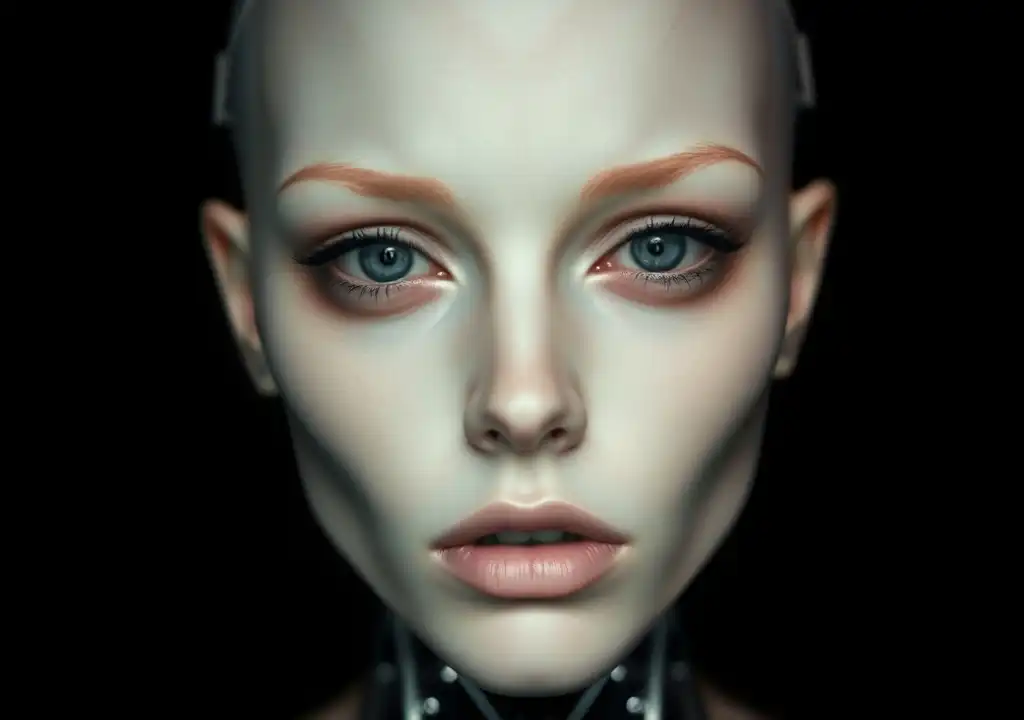How lifelike should robots and AI become before they become unsettling? This question lies at the core of a disturbing new trend on TikTok.
The “uncanny valley” makeup trend features creators using makeup to transform into hyper-realistic robots. The results—featuring pale skin, vacant eyes, and subtly distorted features—are often set against strange, eerie music tracks. Some videos have garnered millions of likes on the platform.
The phenomenon taps into a long-standing pop culture fear of robots, dating back to iconic films like Terminator (1984) and Ex Machina (2014). But in today’s world of AI deepfakes and humanoid robots, the boundary between the real and the artificial is becoming increasingly blurred.
What Is the Uncanny Valley?
The uncanny valley refers to the discomfort people feel when encountering something that looks almost human, but not quite right. Humans typically enjoy seeing artificial beings becoming more human-like—think of characters like WALL-E or C-3PO from Star Wars. But when an object or character starts to resemble a human closely but with subtle discrepancies, it can trigger a sense of unease in the brain.
Humanoid robots are the most common objects to evoke this feeling. Similarly, video game characters and computer-generated images in movies can elicit the same discomfort. For example, the 1998 version of Cats was well-received for its costumes, but the 2019 remake, which used extensive visual editing to make actors appear half-human, half-cat, sparked widespread criticism for its unsettling graphics.
The uncanny valley is not just about how something looks—it also involves how it moves or expresses itself. As Mike Seymour from the University of Sydney points out, even a highly realistic still image can become creepy if it is poorly animated.
Why Are Some Robots So Unsettling?
Several theories explain why certain hyper-realistic robots and AI trigger discomfort. One possibility is that it’s related to our instinct to avoid corpses, a survival mechanism developed to protect against disease or toxins. Robots that look too much like decomposing humans might elicit this fear.
Another theory, proposed by human-computer interaction researcher Karl F. MacDorman, suggests that these robots elicit an existential fear—reminding us of our inevitable mortality.
Seymour adds that the discomfort might be rooted in how our brains are wired to process human faces. For instance, the Thatcher effect occurs when we fail to notice changes in a face’s features if the face is upside down. The brain detects this incongruity and signals that something is wrong, creating a sense of unease.
Origins of the Uncanny Valley
The term “uncanny valley” was first introduced by Masahiro Mori, a professor at the Tokyo Institute of Technology, in 1970. He developed the concept after observing that wax figures and prosthetic hands seemed unnervingly lifelike to him, sparking his theory.
Mori illustrated his idea with a graph plotting human-likeness against affinity (how much we like an object). As an object becomes more human-like, our affection for it increases until it reaches a point where the likeness becomes almost perfect—then, a sharp drop occurs, forming the “valley” in the graph. The valley represents the discomfort we feel when something seems almost, but not quite, human.
Are We Over the Uncanny Valley?
Interestingly, while some viewers of the uncanny valley makeup videos are unsettled, others are unfazed. This has led to speculation that society may be outgrowing the uncanny valley, as we become increasingly familiar with robots and computer-generated characters.
In 2021, Seymour and his research team conducted a study where participants interacted with human-like avatars. They reported positive experiences, which suggests that we may be moving beyond the uncanny valley.
Seymour agrees that people are now more accustomed to hyper-realistic digital characters, thanks to the rise of video games and advanced computer graphics. However, he attributes this shift to improvements in technology. Advances in simulating light and how it interacts with skin, combined with machine learning models that train on real human expressions, have pushed the realism of digital humans much further than before.
Despite these advancements, Seymour notes that the issues surrounding “digital humans” are less about the uncanny valley itself and more about societal and legal concerns regarding how these images are created and used.

